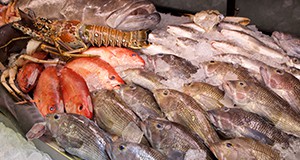
El marisco es un término general para todo tip de pescados y mariscos (USDA 2010). Los mariscos son parte del “grupo de alimentos de proteína” de MyPlate y también proporciona otros nutrientes necesarios para una buena salud (USDA 2011). Como hay muchos beneficios para la salud associados con la inclusión de los mariscos en la dieta, se recomienda que los adultos consuman al menos ocho onzas de una variedad de mariscos cada semana. Mientras que comer más mariscos se recomienda como parte de una dieta saludable, es importante tener en cuenta su presupuesto al hacer compras de mariscos. Este artículo explica los beneficios para la salud de los mariscos y ofrece algunas estrategias para ahorrar dinero para hacer los mariscos más asequible. This four page fact sheet is the Spanish language version of http://edis.ifas.ufl.edu/fs247, written by Michelle Brown and Wendy J. Dahl, and published by the Food Science and Human Nutrition Department.
http://edis.ifas.ufl.edu/fs275
Author: Allison Nick
TAP Sampling for Asian Citrus Psyllid (ACP) Field Sheet

This new field sheet provides information on Tap sampling for Asian Citrus Psyllid (ACP). Monitoring ACP populations is an important tool in the integrated management of citrus greening. The most efficient way to estimate field populations of this insect is by monitoring adults. Tap sampling has proven to provide data needed to make informed decisions for managing this insect pest. Written by Phil Stansly, and published by the Entomology and Nematology Department.
http://edis.ifas.ufl.edu/in1116
Practices to Minimize Flooding Damage to Commercial Vegetable Production
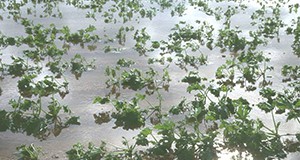
Flooding is a major risk for commercial vegetable production in south Florida, especially in the south Dade County area. Flooding causes oxygen deficiency, or hypoxic stress, causing the plants to produce less energy. This shortage in energy prevents the absorption of nutrients like nitrogen, phosphorous, and potassium. This four-page fact sheet discusses several different management practices for overcoming flood damage, including the use of nitrogen and potassium fertilizers, oxygen fertilizers, growth regulators, and fungicides. Written by Goudong Liu, Yuncong Li, and Xiangju Fu, and published by the Soil and Water Science Department.
http://edis.ifas.ufl.edu/ss425
Pesticide Emergencies: Fires and Spills
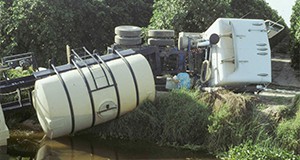
Although accidents and emergencies involving pesticides are rare, unfortunately they do occur. Pesticide fires or spills can result in water, soil, and air contamination; damage to plants; injury to livestock, wildlife, or pets; and can endanger the health of the applicator and other people. Those using pesticides mus be prepared to respond to fires and spills as emergencies and act promptly and correctly. This six-page fact sheet explains how to reduce fire and spill hazards and what to do if a fire or spill should occur. Written by Frederick M. Fishel, and published by the Agronomy Department.
http://edis.ifas.ufl.edu/pi258
Pesticides: Routes of Exposure
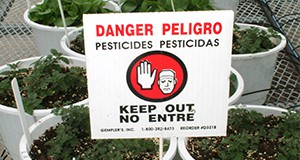
Pesticides can cause both short-term and long-term effects in humans. Human exposure to pesticides can happen through four major routes: through the mouth and digestive system, through the eyes, through the skin, or through the nose and respiratory system. This two-page fact sheet explains each route of pesticide exposure, providing information on how to reduce the risk of pesticide exposure and hazard. Written by Frederick M. Fishel, and published by the Agronomy Department.
http://edis.ifas.ufl.edu/pi260
Pesticide Labeling: Precautionary Statements

Precautionary statements found on pesticide labeling tell the user information about the toxicity, irritation, and sensitization hazards associated with the use of the pesticide. These labels also provide treatment instructions and information to reduce exposure potential. This five-page fact sheet describes the different types of statements found on pesticide labels, as well as the instructions for personal protective equipment, and first-aid treatments. This publication also contains several reference tables for pesticide labels and their meanings. Written by Frederick M. Fishel, and published by the Agronomy Department.
http://edis.ifas.ufl.edu/pi259
Pesticide Emergencies: Contingency Planning

In the event of a pesticide emergency, having a an emergency response plan can help protect the health and welfare of employees and the community, minimize environmental damage, and potentially reduce liability. The goal of contingency planning is to prevent emergencies; but if an emergency does occur, the contingency plan allows business owners and managers to react appropriately in order to minimize detrimental effects.This eleven-page fact sheet provides insight on how to develop a contingency plan for addressing emergencies where pesticides are involved. Written by Frederick M. Fishel, and published by the Agronomy Department.
http://edis.ifas.ufl.edu/pi257
The Savvy Survey #10: In-Person-Administered Surveys

In-person-administered surveys are a type of face-to-face interview that collects mainly quantitative data from a number of individuals and can be useful for collecting information from low-literacy audiences or obtaining very detailed information from agricultural producers or business owners about needs or program outcomes. A part of the Savvy Survey Series, this seven-page fact sheet presents the construction, development, and implementation of in-person surveys as well as how to prepare an introductory script, train interviewers, and manage the survey process. Written by Glenn D. Israel and Jessica L. Gouldthorpe, and published by the Agricultural Education and Communication Department.
http://edis.ifas.ufl.edu/pd074
Preventing Foodborne Illness: Typhoid Fever: Salmonella Typhi
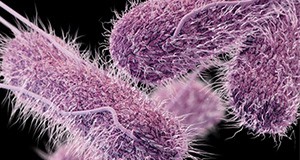
Typhoid fever is a blood infection caused by the consumption of food or water contaminated with the bacterium Salmonella enterica.Typhoid fever is easily controlled and relatively uncommon in the United States, but an estimated 21.5 million people per year are affected by typhoid fever in developing nations including regions in Asia, Africa, and South America. Many of the cases of typhoid fever in the United States are acquired through international travel to these regions. This four-page fact sheet explains the causes and symptoms of typhoid fever, as well as describing who is at risk, what foods have commonly been associated with typhoid fever, and how to implement certain sanitation methods to prevent the spread of typhoid fever. Written by Keith R. Schneider, Renée Goodrich Schneider, and Rachael Silverberg, and published by the Food Science and Human Nutrition Department.
http://edis.ifas.ufl.edu/fs125
Preventing Foodborne Illness: Campylobacteriosis
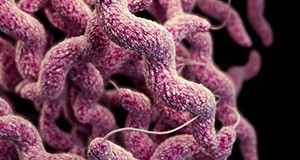
Campylobacteriosis is a gastrointestinal infection caused by bacteria of the genus Campylobacter. These bacteria require low levels of oxygen to survive and have been found in wild birds, poultry, pigs, cattle, domesticated animals, unpasteurized milk, produce, and contaminated water. A part of a series on preventing foodborne illness, this five-page fact sheet describes the Campylobacter bacteria, the causes and symptoms of campylobacteriosis disease, and how to prevent the disease through good sanitation methods and practices for receiving, handling, processing, and storing food products. Written by Soohyoun Ahn, Renée M. Goodrich-Schneider, Rachael Silverberg, and Keith R. Schneider, and published by the Food Science and Human Nutrition Department.
http://edis.ifas.ufl.edu/fs098
Chronic Kidney Disease: Phosphorus and Your Diet

Phosphorous is an essential mineral necessary for the formation of bones and teeth, but also for kidney function and the regulation of muscle contractions, heartbeat, and nerve transmission. High blood levels of phosphorus may lead to adverse effects on bone, kidney, and heart health. When there is too much phosphorus in the blood, the body reacts by leaching calcium from the bones. This can be especially dangerous for those with Chronic Kidney Disease. This four-page fact sheet discusses the relationship between Chronic Kidney Disease and Phosphorous intake, examining foods that are high in phosphorous and ways to manage phosphorous levels. Written by Nancy J. Gal, Lauren Headrick, Kate Bennett, and Wendy J. Dahl, and published by the Food Science and Human Nutrition Department.
http://edis.ifas.ufl.edu/fs273
Sampling the Evidence of Extension Program Impact

In order to evaluate their programs, Extension offices have to gather evidence about program outcomes and impacts. The first step of this process is to determine the appropriate amount of data needed, or the correct sample size. Using a sample can help Extension professionals save time, money, and labor because fewer people must be interviewed or surveyed; thus the complete set of data can be collected quickly. This nine-page fact sheet provides an overview of sampling procedures, beginning with how to determine the research problem, define the population, and decide whether to sample and going on to explain the different types of samples and how they are used. Written by Glenn D. Israel, and published by the Agricultural Education and Communication Department.
http://edis.ifas.ufl.edu/pd005
Shopping for Health: Breakfast Cereals
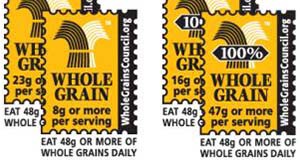
It is no secret that breakfast is an important meal. Eating breakfast provides you with physical and mental energy to start the day, along with vitamins and minerals. Cereal is a quick, versatile, and budget-friendly breakfast choice. The benefits of eating a healthy cereal include increased fiber intake and lower body weight. But navigating the cereal aisle at your local grocery store can be an overwhelming experience. Continue reading this three-page fact sheet to learn more about cereal and how to find your new go-to breakfast choices. Written by Jenna Sechar and Wendy J. Dahl, and published by the Food Science and Human Nutrition Department.
http://edis.ifas.ufl.edu/fs274
Food Safety within the Household: Risk Reduction

Food poisoning is common in the United States. The CDC estimates that 48 million Americans acquire foodborne illness every year, many of which were attributed to food preparation occurring in private homes. In 2013, the top five identified bacterial and viral causes of food poisoning attributed to home food preparation were Salmonella, norovirus, shiga-toxin-producing Escherichia coli, Clostridium perfringens, and Campylobacter. This six page fact sheet outlines the most common food-safety handling mistakes, which are improper food storage, inadequate cooking or reheating temperatures, cross-contamination, and infected food handlers. Written by Lucianna Grasso, Rachael Silverberg, George L. Baker, Renée M. Goodrich-Schneider, and Keith R. Schneider, and published by the Food Science and Human Nutrition Department.
http://edis.ifas.ufl.edu/fs195
A Summary of Revisions to the Worker Protection Standard: 2015

In 1992, the US Environmental Protection Agency (EPA) issued a comprehensive regulation called the Worker Protection Standard for Agricultural Pesticides (WPS). The WPS covers pesticides used in the outdoor and enclosed space production of plants on farms, forests, and nurseries, as well as greenhouses. The EPA has made several changes to the WPS since it was fully implemented in 1995. On November 2, 2015, the EPA revised the WPS, making significant changes to the rule’s requirements. This five-page fact sheet explains those changes. Written by Frederick M. Fishel, and published by the Agronomy Department.
http://edis.ifas.ufl.edu/pi261
Contaminants in the Urban Environment: Microplastics
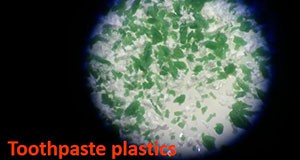
Plastic, plastic everywhere! We live in a world where we are surrounded by plastic: from packaging materials and cutlery to plastic appliances and medical devices. Since the mid-twentieth century, plastic has been a boon to humanity and an integral part of our modern lives. However, plastic debris is a major concern due to its abundance and persistence in the environment. Plastic contaminants not only include plastic debris characterized by large size but also small pieces of plastic in the millimeter size range; these inconspicuous “microplastics” have become a major concern because of their widespread presence in different environments and diverse organisms. This six-page fact sheet discusses the sources of microplastics, their effects on the environment, and ways to minimize microplastics pollution and exposure. Written by Yun-Ya Yang, Ignacio A. Rodriquez, Maia McGuire, and Gurpal S. Toor, and published by the Soil and Water Science Department.
http://edis.ifas.ufl.edu/ss649
First Aid for Pesticide Exposure

Pesticide poisoning is a commonly under-diagnosed illness. This five-page fact sheet describes how to recognize the early symptoms of pesticide exposure and provide basic first aid for the treatment of victims. This fact sheet explains how to provide initial treatment in the case of pesticide exposure on the skin, in the eye, through inhalation, and in the mouth or swallowed. Written by Frederick M. Fishel, and published by the Agronomy Department.
http://edis.ifas.ufl.edu/pi256
Tomato Cultivar Selection Considerations for Open-Field and Protected Culture in North Florida
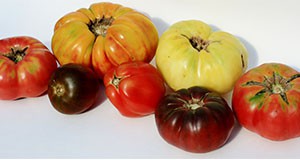
Tomatoes represent one of the most popular vegetables grown in protected culture such as greenhouses, high tunnels, or shade houses. Selecting the correct cultivar of tomato is critical and varies depending on the intended season, type of protected structure, training system, expected insect and disease pressure, post-harvest handling techniques, and intended market. This seven-page fact sheet will focus on the key factors affecting the cultivar selection decisions for growing and selling tomatoes in north Florida. Written by Blake R. Thaxton and Robert C. Hochmuth, and published by the Horticultural Sciences Department.
http://edis.ifas.ufl.edu/hs1273
Contaminants in the Urban Environment: Bisphenol-A

Bisphenol-A (BPA) is a man-made chemical widely used as a component in many products of daily use in households, such as plastic bottles and metallic canned foods. BPA can leach from bottles and cans into the environment, increasing our exposure to BPA. BPA is known to harm exposed animals in laboratory settings as well as in the wild, although its potential to harm humans remains controversial. This seven-page fact sheet will discuss the occurrence, use, and potential harmful effects of BPA and will suggest ways to reduce human and environmental exposure to BPA. Written by Ignacio A. Rodriquez-Jorquera, Yun Ya Yang, and Gurpal S. Toor and published by the Soil and Water Science Department.
http://edis.ifas.ufl.edu/ss648